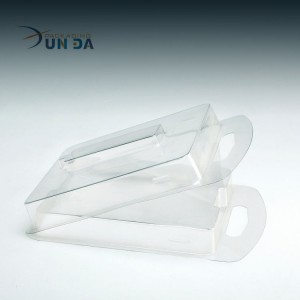Food supply chains often involve large distances and multiple intermediaries. Each stage in the food supply chain, including production, processing, retail and consumption, drives a range of impacts on society and the environment. Packaging can facilitate the safe transit of food and thus plays a central role in the food system. At the same time, packaging practices and the nature of supply chains are under scrutiny as a result of growing concerns over waste and unnecessary resource use.
This is notably the case for single-use plastic packaging, now ubiquitous across supermarkets and take-away services. Food packaging has been demonstrably linked with high levels of waste, terrestrial and marine litter, as well as low rates of re-use or recycling. Food and beverage packaging items are amongst the most commonly found marine litter items in Europe. One estimate puts plastics from the global food industry to be responsible for 15 billion EUR in natural capital impacts annually. By 2020, Europeans are anticipated to consume 900 billion items of packaged food and drink annually. For this reason, alongside the recently published Plastics Strategy, news that the European Commission will develop a specific legislative proposal on single use plastics is highly welcome.
A leading justification for the use of single use plastics to package food is the role that packaging can play in extending shelf-life of food and consequently reducing food waste. However, per capita food and packaging waste rates in Europe remain amongst the highest globally, suggesting that packaging has not offered a silver bullet to the food waste problem.
New analysis of food packaging, as part of a study for Zero Waste Europe and Friends of the Earth, published today explores the interaction of packaging and food waste in more detail. research reveals that packaging plays diverse roles in different contexts. Some forms of packaging can be seen to drive food waste at different stages in the supply chain, be it in defining strict retail grading standards resulting in waste by processors, or as a result of multi-packs leading consumers to over purchase and resulting in more waste at home. Importantly, much of the Life Cycle Assessment (LCA) data used to demonstrate the “green credentials” of plastic packaging simplify the underlying drivers of food waste, as well as the end-of-life impacts of packaging waste. There is also a significant and often ignored knowledge gap regarding the risks associated with chemical migrations from different food contact materials – an issue not exclusive to plastics.
Overall, a tendency towards flexible, multi-material, and light weight packaging, often reasonably aiming at material savings or reductions in transit emissions, has resulted in packaging which is very difficult or impossible to recycle. More could be done to encourage a shift towards reusable packaging, or designs which can be readily recycled. One driver could be to develop extended producer responsibility (EPR) schemes with fees modulated according to the reusability or recyclability of packaging
A growing trend towards on-the-go lifestyles is also an important driver for the consumption of food and beverage packaging – many single use plastics stem from take-away services and the rapidly growing sector of e-commerce/delivery services. These services present a particular challenge as their convenience is linked to pervasive use of single use plastics and in many cases a higher risk of littering. Continued growth in these services presents challenges for the delivering a circular economy more widely.
Despite these challenges, research suggests that opportunities for reducing both food and packaging waste exist in the development of short food supply chains (SFSCs) – for example in reducing the need for cold storage, light weight packaging, and reducing food miles. In SFSCs, durable and heavier reusable packaging becomes economically and ecologically viable, as transport emissions are reduced and reverse logistics are simplified. Many SFSCs also actively integrate agro-ecological production methods, and thus support further resource savings, such as reduced applications of fertilizers and pesticides. SFSCs, such as those formed by Community Supported Agriculture schemes, illustrate how sustainable agriculture and low packaging intensity can be combined. Nevertheless, there remains uncertainty on how such initiatives can be up-scaled as they remain peripheral to Europe’s food system.
Further down the supply chain, public awareness of the negative socio-economic and ecological impacts of single-use plastics has also grown. This has been met with a demand to integrate the principles of zero-waste into the food system – reflected in the growing number of package free retailers, or a revival of traditional markets. Likewise, some social entrepreneurs are applying the concept of zero waste to a range of food services, demonstrating that convenience and innovation does not necessarily mean waste.
A key conclusion from the analysis is the need to develop a holistic evidence based approach to the role of packaging in the food system. This would support the development of effective legislation which can tackle the dual challenges of food waste and packaging waste. Different measures, including reduction targets on single-use packaging, support for waste prevention systems (such as those implementing zero waste principles or reusable packaging) and market based instruments to prompt behavioural change, will be necessary to support the transition to a circular economy and sustainable food system.
FROM: IEEP
